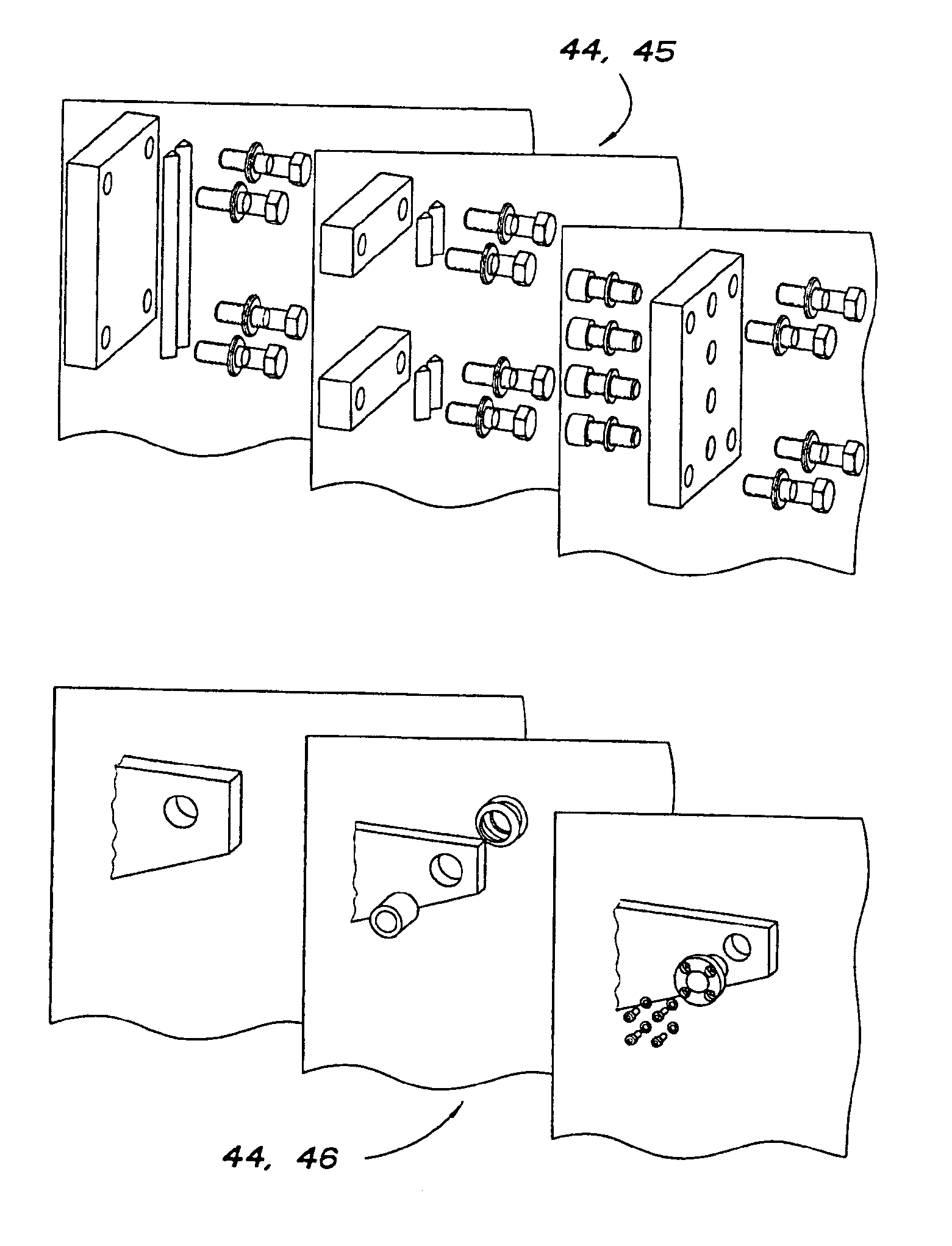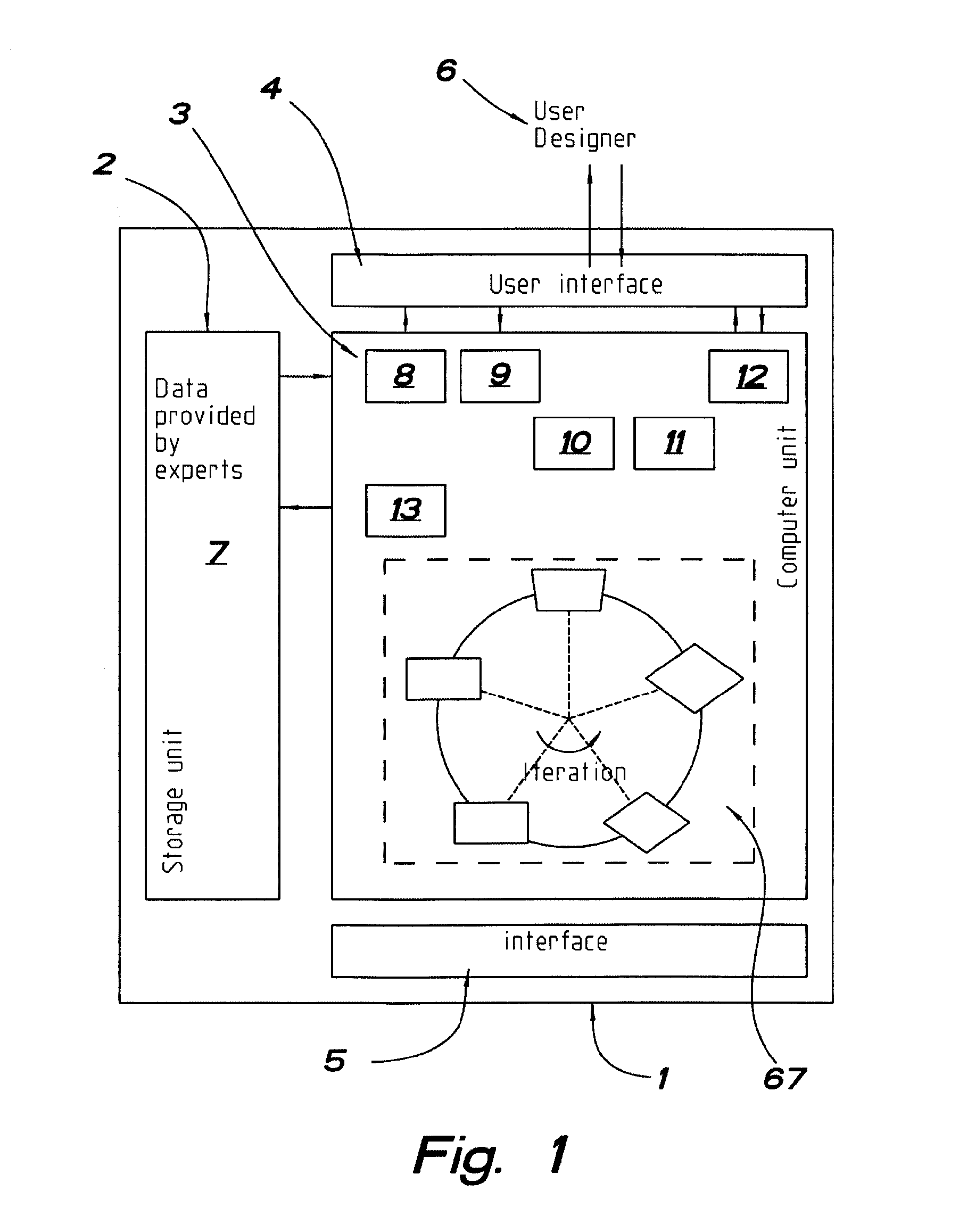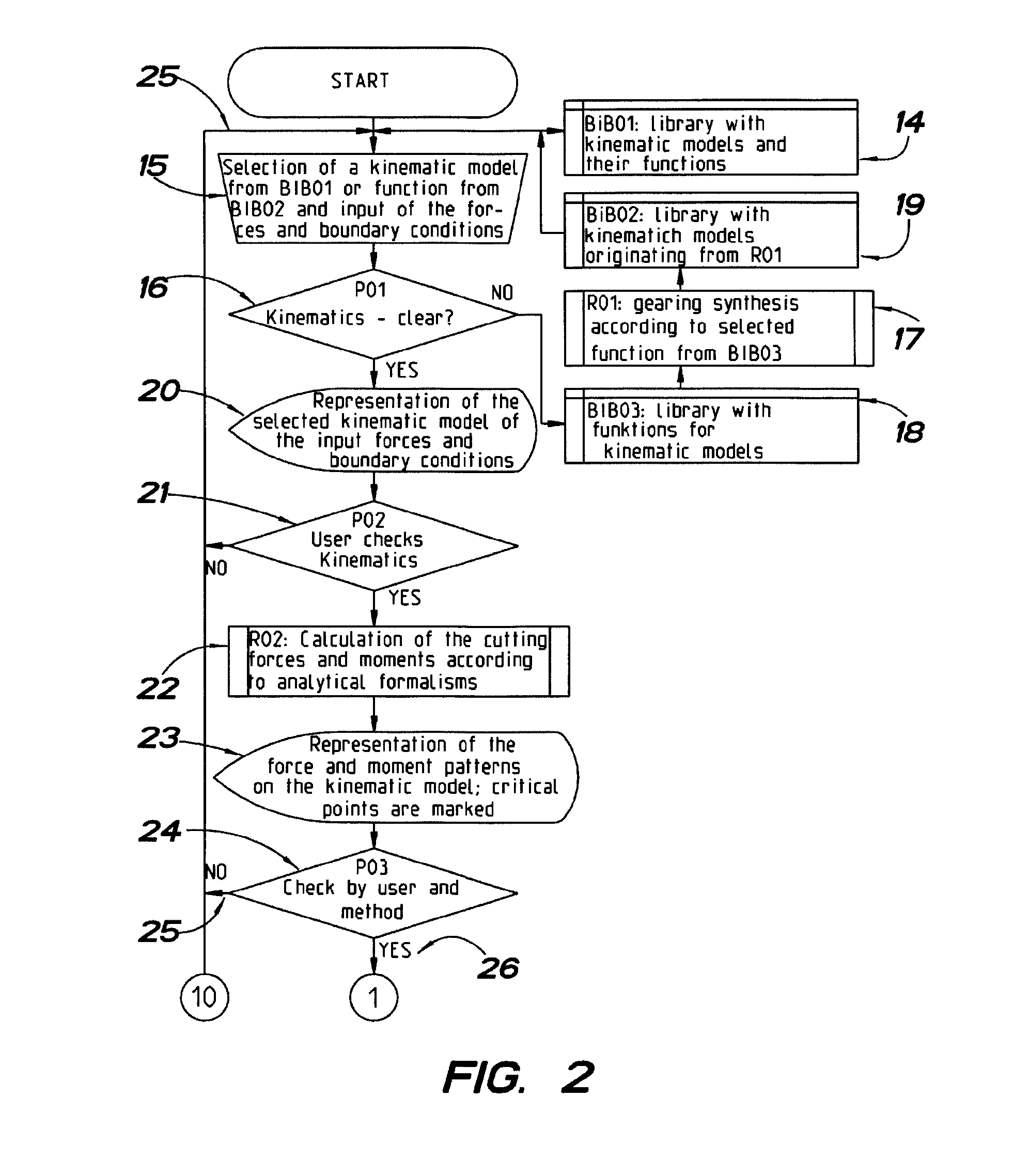Electronic data processing system for automatic or semi-automatic design and design method
a technology of electronic data processing and design method, applied in the field of electronic data processing system for automatic or semi-automatic design and design method, can solve the problems of large number of solution possibilities, long and controversial discussions, fatal consequences, etc., and achieve the effect of reducing the duration of the design process, reducing costs, and high quality design
- Summary
- Abstract
- Description
- Claims
- Application Information
AI Technical Summary
Benefits of technology
Problems solved by technology
Method used
Image
Examples
example
[0046]The functioning of the inventive EDP system will now be described using a real design example:
Task: A truss is to be designed which sustains a vertical static load of 2000 N, with a distance of 250 mm from the vertical screw area, via a pin guided in a bore of the truss with D=20 h 9 mm. The bending of the truss upon incorporation of the pin may not thereby exceed a value of 0.050 mm.
[0047]Firstly, as shown in FIG. 6, according to 15, a kinematic model is selected from the library 14. The kinematic model of a truss is found here which corresponds to our requirements with the number of the degrees of freedom f=0 and the number of supporting points LP=1. The required indications are input as in FIG. 7, following which they are set out via the user interface 4, 20. The inputs are checked 21 and subsequently the calculation of the cutting forces and moments is carried out by the computer unit according to analytical formalisms 22. Then the results are set out 23 as in FIG. 8. Chec...
PUM
 Login to View More
Login to View More Abstract
Description
Claims
Application Information
 Login to View More
Login to View More - R&D
- Intellectual Property
- Life Sciences
- Materials
- Tech Scout
- Unparalleled Data Quality
- Higher Quality Content
- 60% Fewer Hallucinations
Browse by: Latest US Patents, China's latest patents, Technical Efficacy Thesaurus, Application Domain, Technology Topic, Popular Technical Reports.
© 2025 PatSnap. All rights reserved.Legal|Privacy policy|Modern Slavery Act Transparency Statement|Sitemap|About US| Contact US: help@patsnap.com



